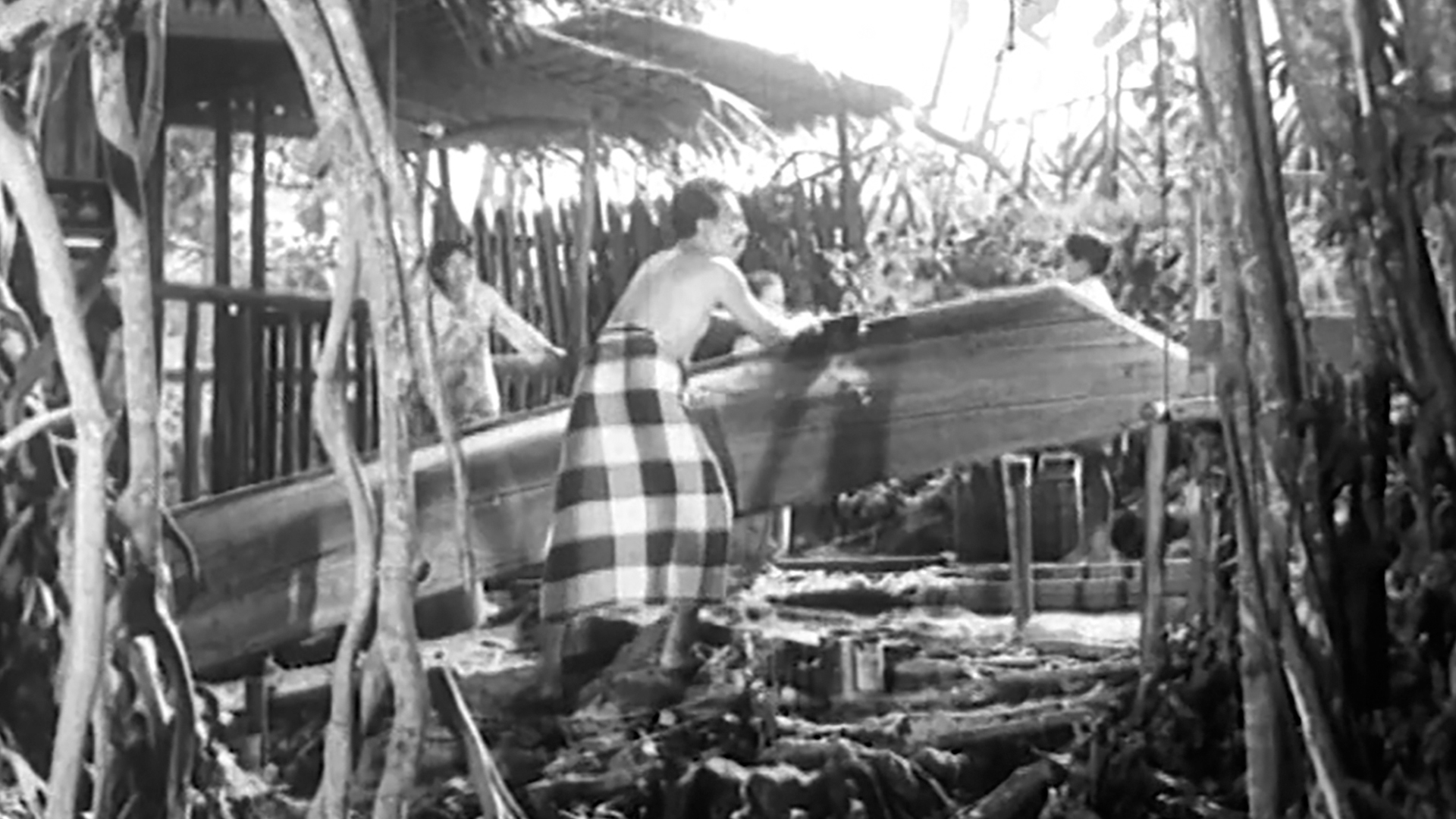





Social Realist Turns in Singapore Filmmaking (1950s–1980s) - Day One
Since the 1950s, Singaporean realist painter Chua Mia Tee has often referred to film throughout his practice to describe his artistic approach. In a 1982 interview with The Straits Times, he likened his style of realism to “the cinema—real horses, real soldiers.” This description is not far-off from his appeal to fellow painters. In his essay for the Equator Art Society’s first art exhibition in 1958, he implored them to take on the multiple roles of scriptwriter, director and actor to bring life to their scenes and express their ideas “in a more real, lucid and focused way than real-life subjects do.”
+ Read More
This turn towards a moderate form of social-realist filmmaking in Singapore-based studios MFP and Cathay-Keris continued into the 1960s, undertaken by local directors and scriptwriters such as Hussain Haniff and Omar Rojik. Many of their films straddled the boundary between fiction and documentary. They chose to shoot on location to capture real living environments, and tackled topics such as gangsterism, feudal elitism and the tensions between tradition and modernity. Many films portrayed stories of the working class—a common subject matter also found in Chua’s paintings.
By 1973, after MFP and Cathay-Keris had closed, the Chong Gay Organisation—distributors and exhibitors of “left-wing” films from Hong Kong that espoused mild socialist agendas—sought to revive feature film production in Singapore by producing social-realist drama films reflecting local interests and themes. This was partly in response to what they deemed as overtly commercial films showing in cinemas at the time which featured a corrupt, subversive and degenerate culture. Most notable among the three Mandarin films produced by Chong Gay was Two Sides of the Bridge (1976). It contained underlying themes and values that seemed like projections of Chua’s realist works and writings from the 1950s, a phase when he was active in the Arts Research Group and Equator Art Society.
By the mid-1960s, a number of independent filmmakers who were working outside of the studio system and the state propaganda film-television units also took up film production, shooting on 8mm or 16mm film. Some of them created short-form documentaries, often with an individual artistic vision or intent to relay certain social messages. The films by auteurs such as Rajendra Gour and Cheong Kok Seng combined documentary realism and diaristic, self-reflexive filmmaking, while also adopting experimental filmic approaches. Additionally, members of local “amateur” filmmaking clubs, such as the Singapore Cine Club (renamed the Singapore Cine and Video Club in the 1980s) also created their own works, including documentaries which were underpinned by social advocacy and journalistic reporting. Artist-filmmakers from overseas also worked in Singapore, often on a transient basis. These itinerant filmmakers took in local scenes and subjects with a curiosity and mode of address which were unlike local filmmakers or artists like Chua. A noteworthy example was Dutch artist and experimental filmmaker Edward Luyken, who made several films in 1980. One of Luyken’s films was a non-expository but structured film which focused on a cemetery in Singapore and its workers. Works like Luyken’s were experimental constructs of images which provide a rich point of comparison to Chua’s paintings of manual labourers and their environments.
This programme, Social Realist Turns in Singapore Filmmaking (1950s–1980s), conceived by Toh Hun Ping aims to present a broad and non-exhaustive survey of social realist and documentary filmmaking in Singapore from the 1950s to the 1980s. It will highlight, discuss and compare films from this period against the artworks and writings of Chua Mia Tee—which share similar, if not overlapping socio-cultural contexts—as featured in the exhibition Chua Mia Tee: Directing the Real.
Artworks by Chua Mia Tee that are referred to include Malay Fisherman at Changi Beach (1977), Epic Poem of Malaya (1955), and National Language Class (1959).
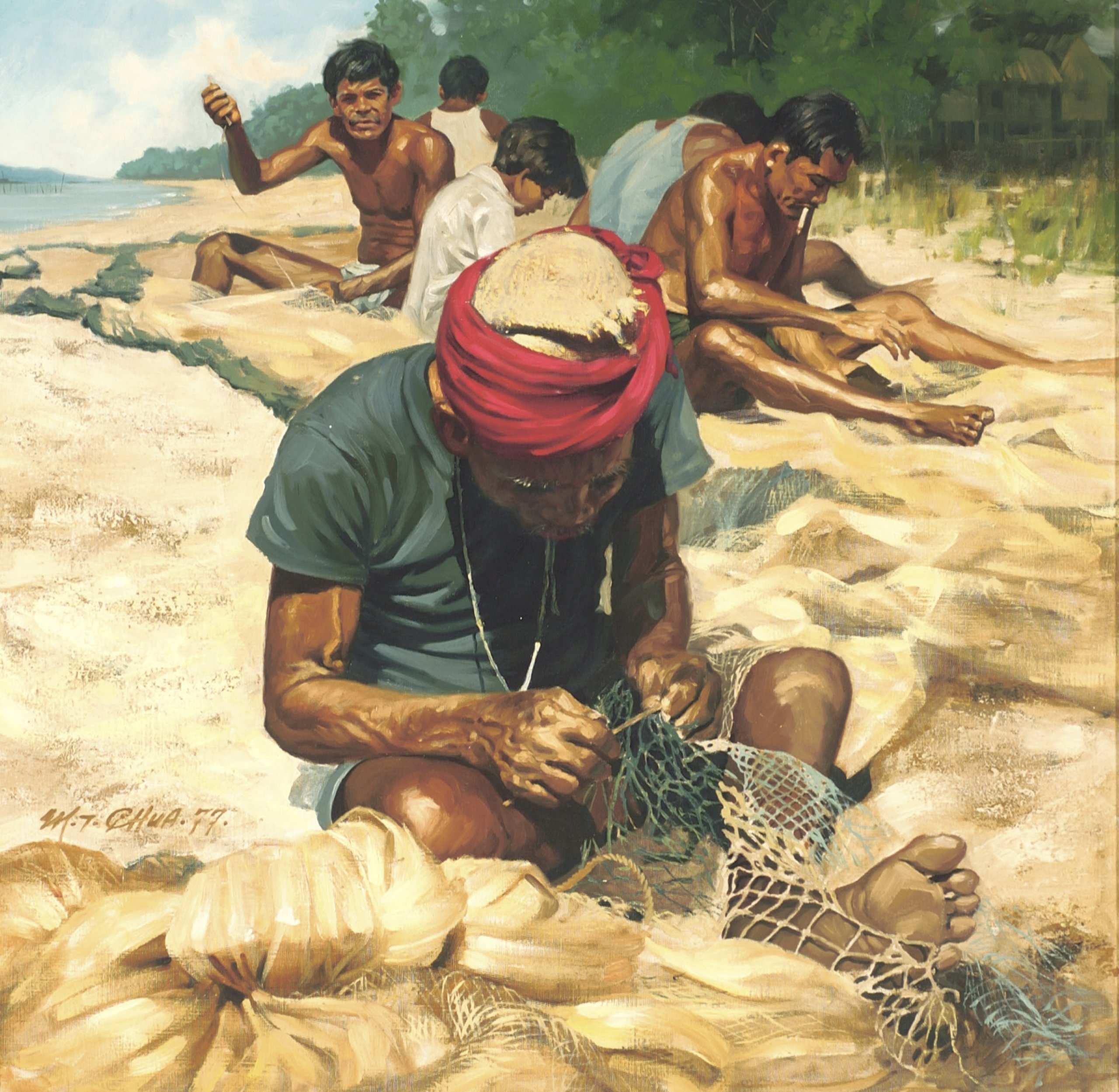
Chua Mia Tee. Malay Fisherman at Changi Beach. 1977. Oil on canvas, 76.7 x 78 cm. Gift of Times Publishing Limited. Collection of National Gallery Singapore. Image courtesy of National Heritage Board, Singapore. © Chua Mia Tee and family.
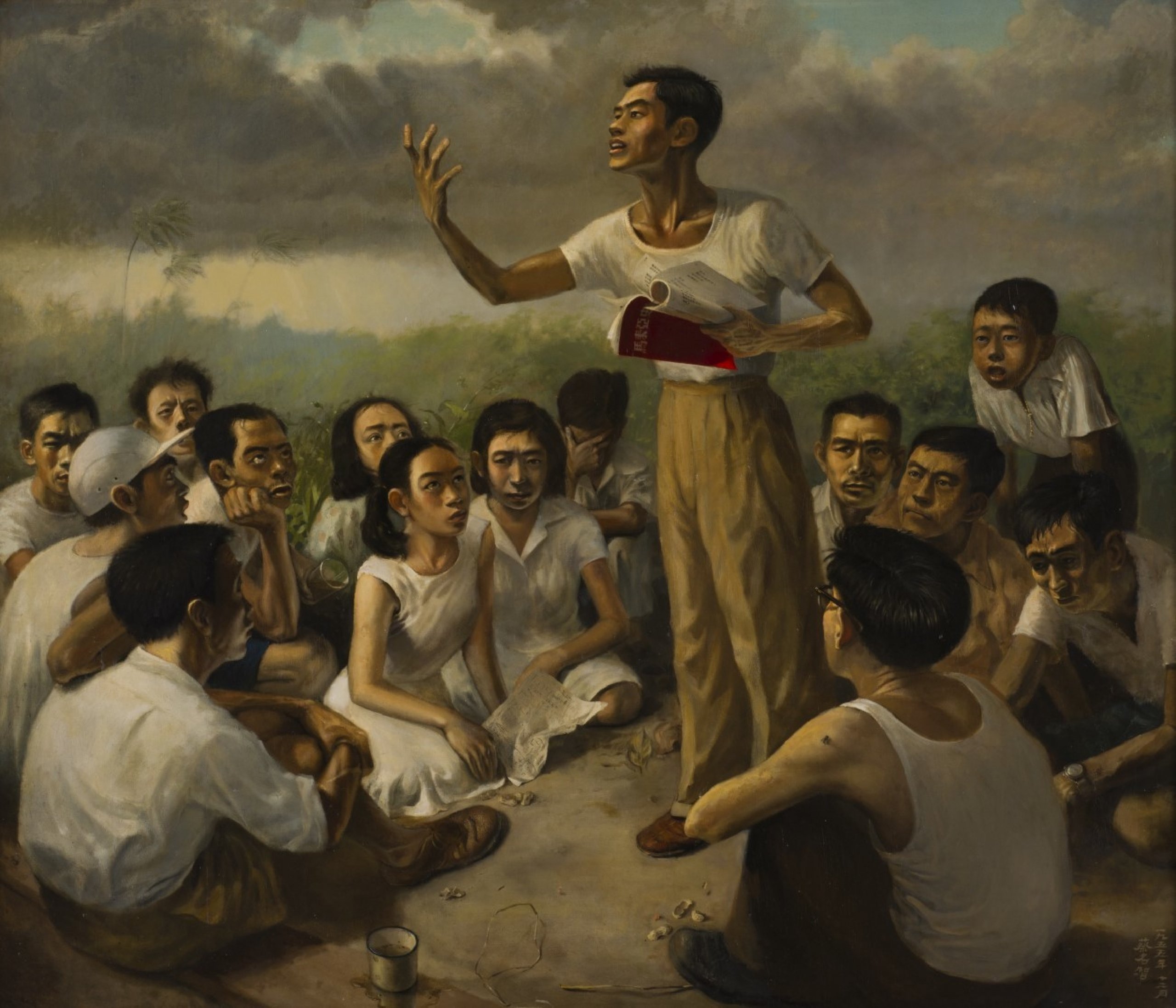
Chua Mia Tee. Epic Poem of Malaya. 1955. Oil on canvas, 105.5 x 125 cm. Collection of National Gallery Singapore. This work has been collectively adopted by [Adopt Now] supporters. Image courtesy of National Heritage Board, Singapore. © Chua Mia Tee and family.
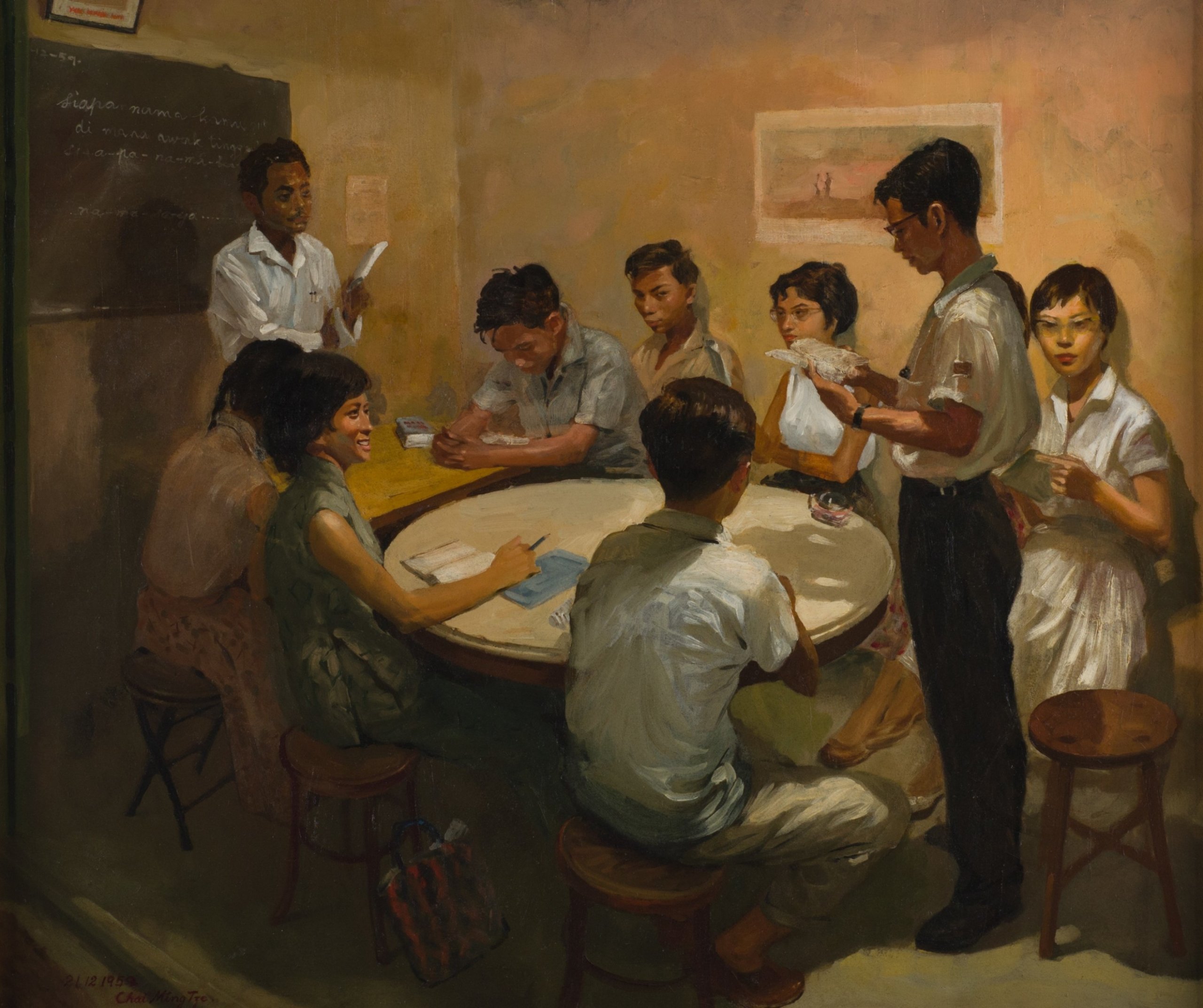
Chua Mia Tee. National Language Class. 1959. Oil on canvas, 112 x 132 cm. Gift of Equator Art Society. Collection of National Gallery Singapore. Image courtesy of National Heritage Board, Singapore. © Chua Mia Tee and family
Toh Hun Ping (b. 1978, Singapore) is an artist-filmmaker and independent researcher. His artworks and experimental films have been presented in exhibitions and film festivals internationally. As a film researcher, he investigates the history and cultural contexts of film production and distribution in 20th century Singapore. He has served as researcher-writer, programmer and video editor for projects organised by Asian Film Archive (State of Motion) and National Museum of Singapore (The Foundation of Run Run Shaw’s Cinema Empire). He was principal researcher for the book Xin Ke: The Story of Singapore and Malaya’s First Feature Film, authored by Yvonne Ng and Jan Uhde, Kucinta Books, 2019. He also started the Singapore Film Locations Archive, a private video collection of films made in and about Singapore, and runs a website about filming locations in Singapore of the past (sgfilmlocations.com).
- Read Less
DAY ONE
Day One will begin with a talk discussing Malay-language melodrama films of the 1950s produced in Singapore, all with a social realist bent. The talk will centre on the works of filmmakers Phani Majumdar, K. M. Basker, Jamil Sulong, P. Ramlee and Chua Boon Hean, comparing them with the realist artworks of Chua Mia Tee.
Day One’s talk will be followed by the screening of Phani Majumdar’s Doctor (1958).
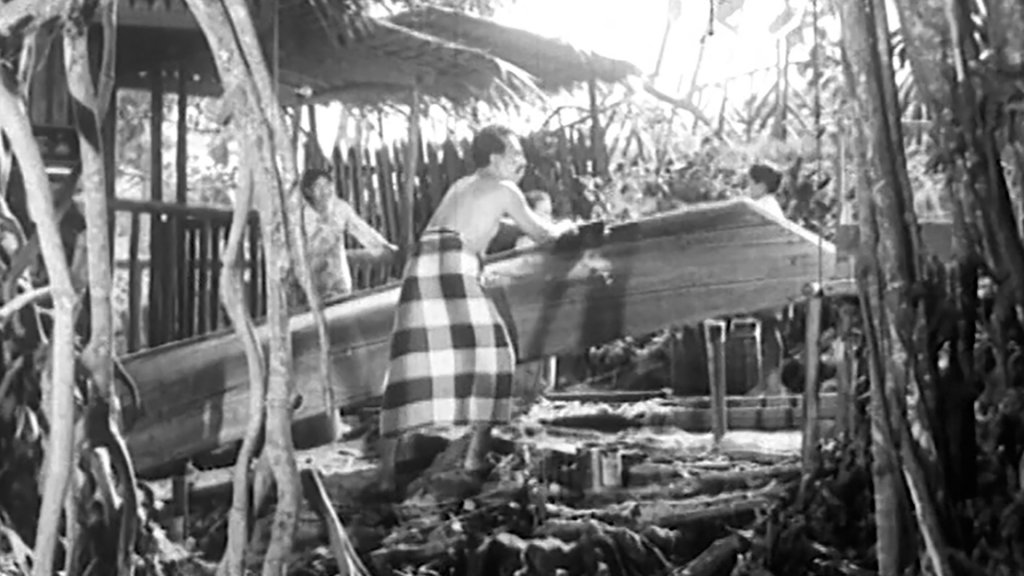
DOCTOR
By Phani Majumdar
Singapore, Malaya | In Malay with English subtitles | 1958 | 121 min | PG
Doctor tells the story of a village carpenter and boat-builder Bakar, who loses his daughter to illness because he is unable to afford the exorbitant medical fees. As a result, he resolves to send his son Idris to medical college despite his neighbours’ mocking, with the hope that he will become a doctor to serve the poor and the weak. Idris fulfils his father’s wish and completes his medical studies at the University of Malaya (Singapore). Sympathetic to the poor, Idris initially refuses payment from his underprivileged patients, but he soon realises that he cannot sustain his medical practice without demanding a fee.
Doctor is a Malayan remake of director Phani Majumdar’s earlier film Dhobi Doctor (1954), which had been produced in India. The film was made in a melodramatic social-realist style which was often utilised by film directors with a background in Indian social drama films, especially when making Malay-language films in Singapore in the 1950s.
This is the first time since its initial release in 1958 that Doctor is being shown with English subtitles (courtesy of the Asian Film Archive).
City Hall Wing, Level B1, The Ngee Ann Kongsi Auditorium (National Gallery Singapore)
- Sat 23 Jul | 2.00pm
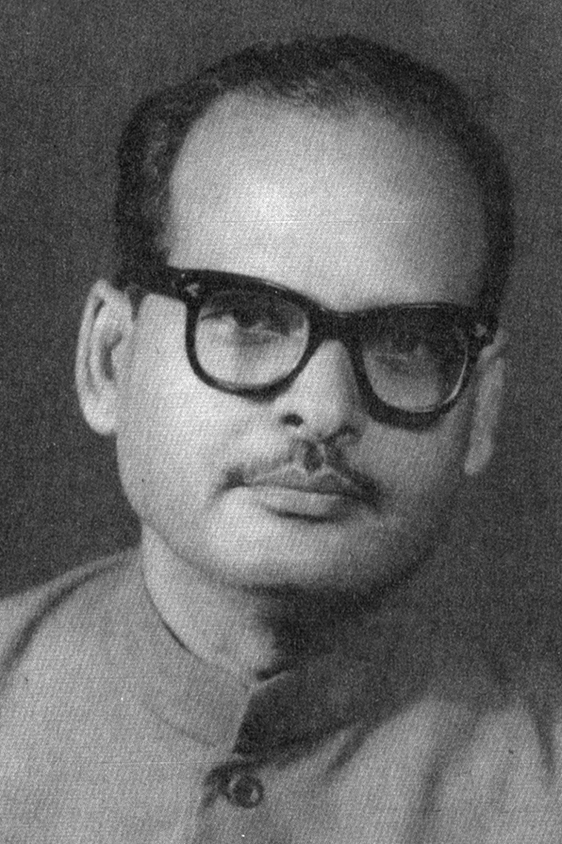
Phani Majumdar (b. 1911, East Bengal; d. 1994, India) was a pioneering Indian film director who began his career with the famous New Theatres Studio in Calcutta. He is most known for his debut film Street Singer (1938), which starred K.L. Saigal. He also worked in Bombay and Singapore, where he was instrumental in establishing a system of production at Shaw’s Malay Film Productions Ltd. In Singapore, he completed eight feature films in Malay, Mandarin and English, most notable of them Hang Tuah (1956), which screened in competition at the Berlin International Film Festival (1957).
As part of this programme, there will be free curator tours of the Chua Mia Tee: Directing the Real exhibition on Sunday 24 July, at 11am and 12pm. Please click ‘BOOK TOUR’ to register.
City Hall Wing, Level B1, The Ngee Ann Kongsi Auditorium (National Gallery Singapore)
- Sat 23 Jul | 2.00pm
Films
Films
Films
Films
